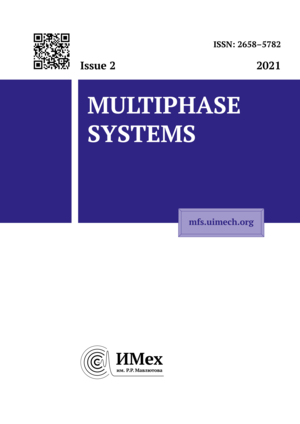

In the work we consider a quasilinear system of differential equations describing the motion of ideal gasdynamic medium. From the thermodynamic identity it follow that the medium is two-parameter. The equation of state is given by the internal energy as a function of an entropy and a specific volume. The equivalent transformations do not change the form of the system but change only the equation of state. We found all equivalent transformations converting only thermodynamic parameters and expanding all variables. The known group classification extended admitted group consists of the equivalent transformations. There is exclusion when the equation of state is linear on the specific volume and in the case of oneatomic gas. In the last case the model is invariant under projective transformations. We found a family of the equations of state for which the projective of transformations are the equivalent transformations if the equations of state change with the time.
gas dynamics,
equation of state,
equivalent transformation,
group classification
We consider a quasilinear system of differential equations describing the motion of an ideal gas-dynamic continuous medium with a state equation either stationary type or time-dependent. In the stationary case, the internal energy is a function of two thermodynamic parameters, and all thermodynamic parameters are functions of time and the vector of the particle's position. It shows how these functions are related. The group analysis of equations of a gas-dynamic type is the most advanced: a group classification with respect to the state equation was carried out, optimal systems of nonsimilar subalgebras of the main admitted groups were constructed, a graph of nested subalgebras was compiled, and many invariant and partially invariant submodels and exact solutions were considered. In the group classification, only some equivalence transformations were used, preserving the form of the system, but changing the state equations. In this paper, new equivalence transformations are found that set almost all extensions of admitted groups in group classification. We consider all equivalence transformations that change only the thermodynamic parameters, as well as equivalence transformations of dilatation of general form. A direct functional method for computing transformations is used. There are two exceptions to this rule. The state equation is linear form with respect to the specific volume in the first case. Equivalence transformations are contact and form an infinite group. The second case is the case of a monatomic gas, when the model is invariant under a projective transformation. We found a family of state equations for which the projective transformation is an equivalence transformation in the case of the state equation changing with time. The motion of a multiphase medium as a whole can be described with the help of a non-stationary state equation without being interested in the motion of individual components. To do this, we must measure only the power of the energy inflow in an elementary volume. Such state equations are measured for media with a rheology.
